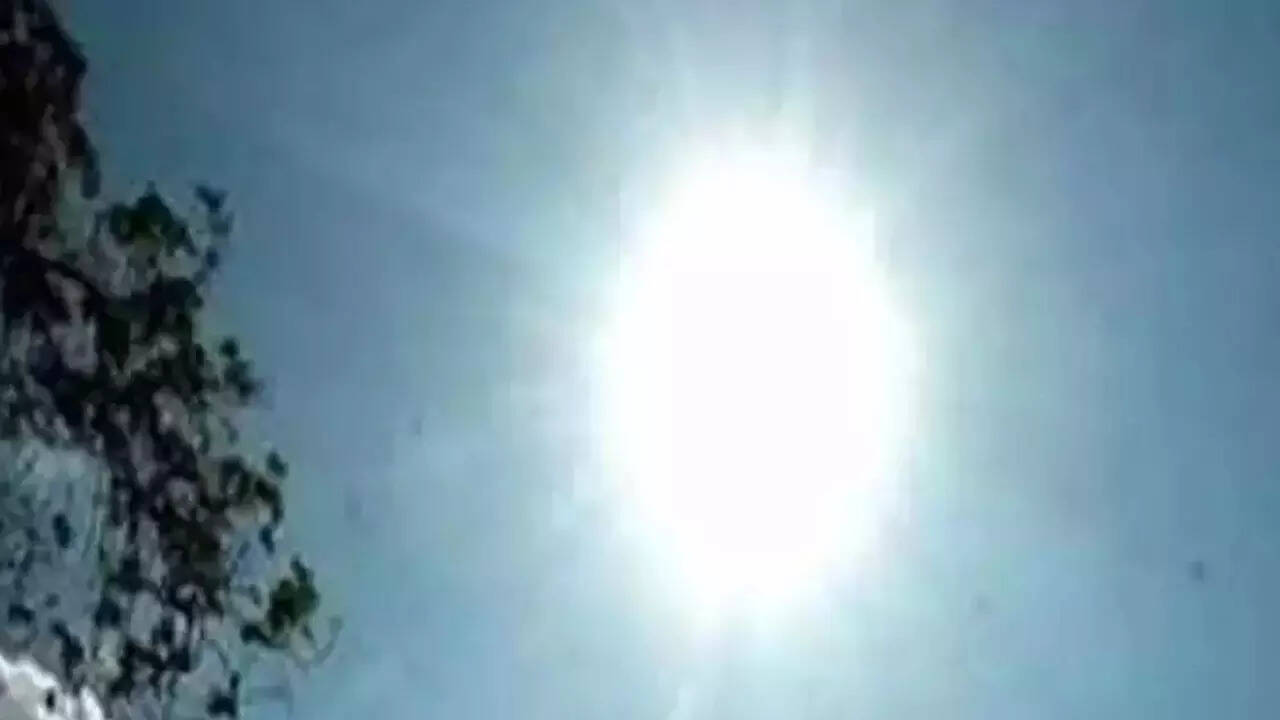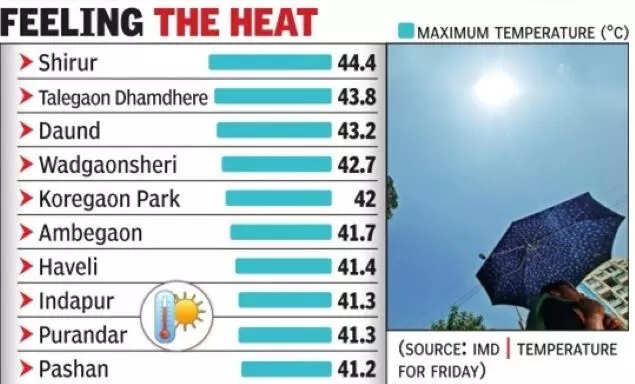
PUNE: Most locations in Pune recorded above 41°C maximum temperatures on Friday, with IMD forecasting the mercury to hit 42-43°C in the city around May 4-5. At 46.4°C, Chandrapur in Vidarbha saw its second highest day temperature for April in recorded history on Friday.
Nineteen of the 29 major IMD stations in Maharashtra recorded above 40°C maximum temperatures on Friday, with all locations in Vidarbha recording day temperatures above 45°C, IMD data showed.

There was a marginal drop in maximum temperature in Shivajinagar on Friday at 40.7°C. But other locations in Pune recorded temperatures above 41°C. Lohegaon recorded a day temperature of 41.5°C, followed by Magarpatta (41.9°C), Lavale (41.8°C) and Chinchwad (41.1°C).
IMD officials said there might be no significant change in maximum temperatures over many parts of Central India and Gujarat till May 1, but a fall by about 2°C could be expected thereafter. “There is a heatwave forecast in isolated places in Madhya Maharashtra on April 29-30. and Vidarbha for the next five days. An upper air anticyclone is compressing the air, causing it to move downwards, leading to unusually high day temperatures. Hot winds are also blowing into parts of Maharashtra from hotter regions of Northwest India,” an IMD official said.
Scientists have called the recent heatwave events in India unprecedented. IITM scientist Roxy Mathew Koll told TOI that research so far has shown that the intensity of extreme temperatures and heatwave are likely to increase in terms of frequency, duration and area over parts of India and Pakistan in the coming years.
“For instance, regions stretching from Pakistan and Northwest India, towards central India, and parts of Maharashtra, Odisha, Telangana may especially be vulnerable to increased intensity and duration of heatwaves in coming years. So, policies should be in place to reduce the impact of such extreme weather on vulnerable groups like as farmers, school children, slum dwellers etc,” Koll said.






